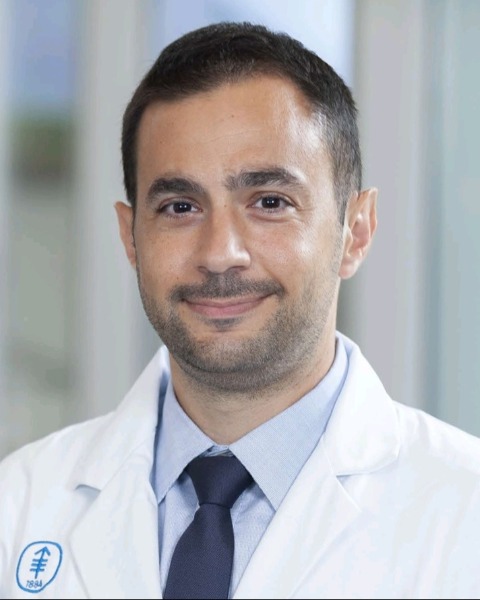Interventional Oncology
Accuracy of a Cone Beam CT-based Liver-directed Therapy Planning Software for Perfused Parenchyma Prediction

Olivier Chevallier, MD, PhD (he/him/his)
Assistant Attending
François-Mitterrand Teaching Hospital, University of Bourgogne/Franche-ComtéDisclosure(s): GE Healthcare: Research Grant or Support ()
- HY
Hooman Yarmohammadi, MD
Associate Attending
Memorial Sloan-Kettering Cancer Center - KZ
Ken Zhao, MD
Assistant Attending
Memorial Sloan Kettering Cancer Center - LK
Leah Kiely, MSc
Clinical Research Scientist
GE Healthcare 
Vlasios S. Sotirchos, MD
Assistant Attending
Memorial Sloan Kettering Cancer Center- FR
Fourat Ridouani, MD
Attending
Memorial Sloan Kettering Cancer Center - EA
Erica S. Alexander, MD (she/her/hers)
Assistant Attending
Memorial Sloan Kettering Cancer Center - SS
Stephen B. Solomon, MD
Section Chief
Memorial Sloan Kettering Cancer Center - MS
Mikhail Silk, MD
Assistant Attending
Memorial Sloan Kettering Cancer Center
Presenting Author(s)
Author/Co-author(s)
Accurate intraprocedural assessment of injected liver volume and distribution can help guide safe and effective hepatic intraarterial therapy. The purpose of this study is to assess the accuracy of a Cone Beam CT (CBCT)-based liver-directed therapy planning software to predict volume and distribution of the targeted perfused liver parenchyma (Liver ASSIST Virtual Parenchyma, GE Healthcare, Chicago, IL).
Materials and Methods: This IRB-approved retrospective study included patients with CBCT (whole liver or lobar) and at least one selective CT-Angiography (CTA) (sub-segmental to lobar) obtained during hepatic angiography in a hybrid CT-angio suite from 2019 to 2022. Quality of CTA and CBCT images were evaluated by 3 reviewers. Studies were excluded if there was poor enhancement, artifact, or targeted liver truncation by the CBCT’s field of view. Software automatically generated a predicted targeted liver parenchyma (pTLP) based on the CBCT, which was then manually adjusted (cTLP) using tools integrated in the software. The true targeted liver parenchyma (TLP) was defined from manual segmentation of the selective CTA. Software accuracy for volume was assessed by comparing the pTLP/cTLP to the matched TLP, and analyzed with relative error and linear regression analysis. Spatial overlap accuracy for parenchymal distribution between pTLP/cTLP and TLP was assessed by the Dice similarity coefficient (DSC).
Results: Nineteen patients met the inclusion criteria (26 CTA matched with a CBCT). CTA were lobar, sectoral, segmental, and subsegmental; 5 (19%), 8 (31%), 11 (42%), and 2 (8%) respectively. The median TLP was 323 mL [IQR 145;534]. pTLP and cTLP were well correlated with TLP (r=0.98, p< 0.001; and r=0.99, p< 0.001; respectively). For pTLP and cTLP, median relative errors in volume prediction were 13% [IQR 3;21%] and 9% [IQR 3;18%] respectively. Median DSC were 0.79 [IQR 0.71;0.82] and 0.83 [IQR 0.76;0.86] respectively.
Conclusion: This software provides an accurate prediction of perfused liver parenchyma from a virtual point of treatment placed on a proximal CBCT. Investigation of its intraprocedural value for intra-arterial liver directed therapies planning is warranted.

.png)
.jpg)
.png)
.png)
.png)
.jpg)
.png)
.png)
.jpg)